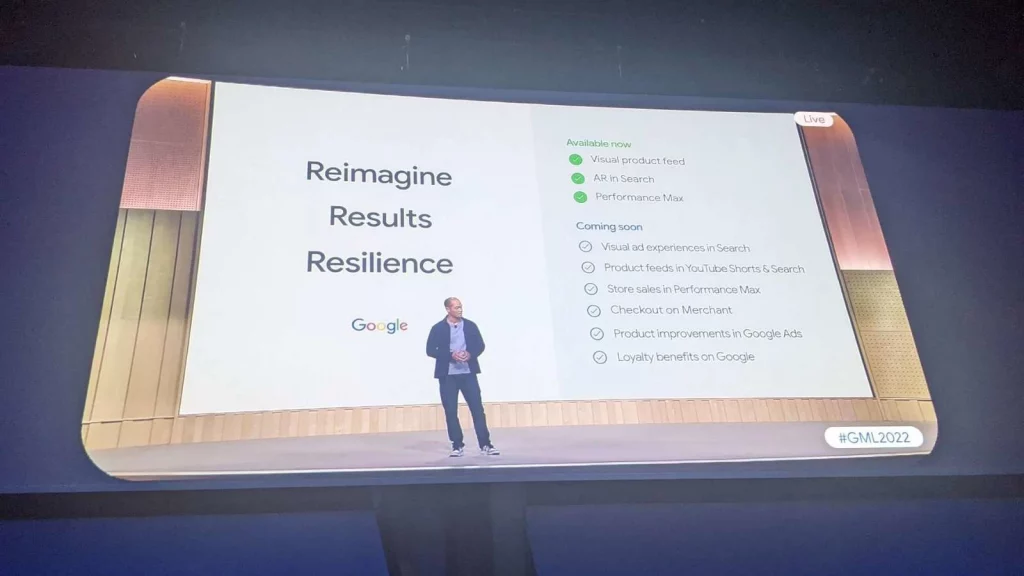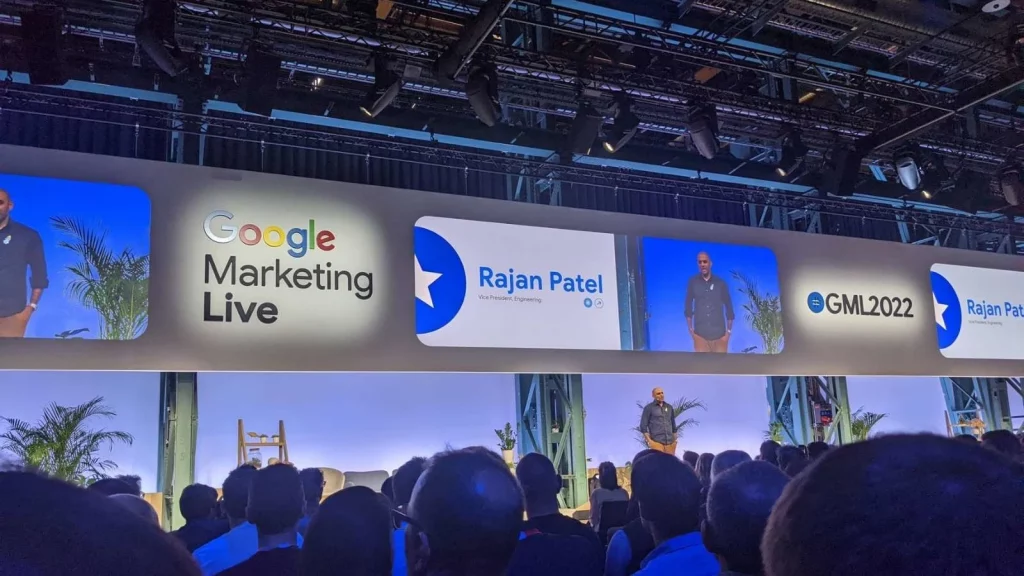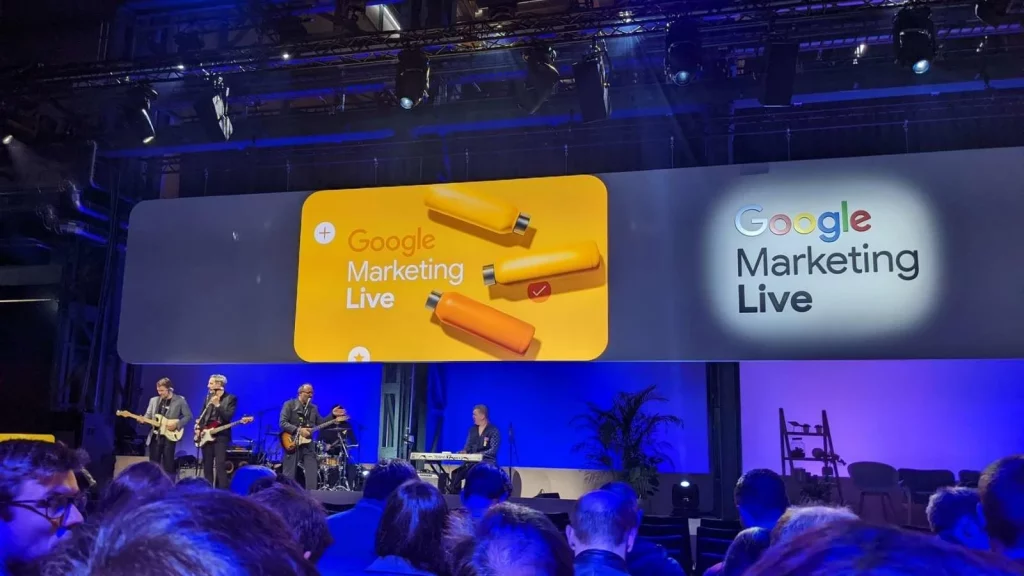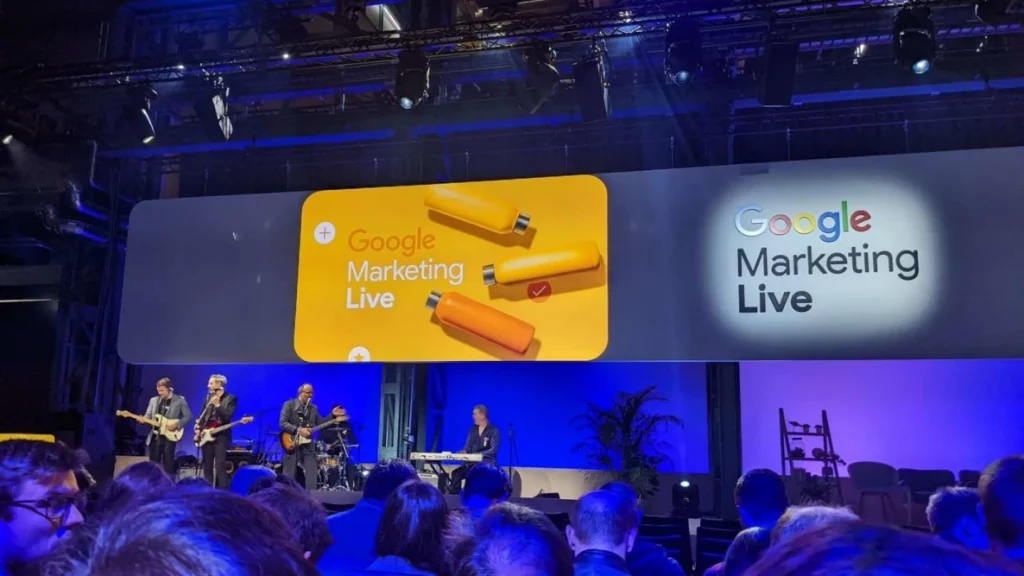By Mike Sharp
Google Marketing Live (GML) is the event that everyone wants to attend. It’s an annual invite-only event, attended by brands and a select number of agencies, where key product announcements are revealed to the world.
And we were lucky enough to be invited out to Zurich, Switzerland to take it all in.
The bit that we really love, however, is getting access to the people behind the scenes; the product engineers and developers who spend time in round tables and one-to-ones discussing issues or developments in the products.
There were too many sessions to include in this writeup, so I’ve summarised the most important announcements!
The most notable announcements from GML22
Performance Max gets an upgrade (or two)
One of Google’s major developments in the last 12 months, Performance Max, was naturally a hot topic. Having been grumbled about for some time in the industry due to the lack of control available to campaign managers, it came as no surprise to see several upgrades:
- Experiments to test potential: A good way of enticing more people to try the campaign type and build trust in it by allowing A/B testing.
- More insights: We’ve been begging for this since it launched, and Google has finally listened. Insights will include better attribution details, as well as audience and auction insights, so we can finally see what’s driving performance.
- In-store goals: This is an interesting one as it makes Performance Max available to those with a physical presence and helps to bridge the gap to offline sales. It also came with an amazing sounding ‘burst mode’ to help deal with seasonal foot traffic too.
- Optimisation score recommendations: Again, this brings PMax in line with what we’re used to in the platform
One of the best things about being invited to Google Marketing Live is that we had a chance to talk directly to the team actively developing Performance Max, sharing our thoughts and feedback which will help to shape how the product unfolds in the future.
Why should I care?
Performance Max isn’t going away. Despite the somewhat negative reception that it’s been met with, Google is pushing ahead with plans for it to replace Smart Shopping. That makes these upgrades all the more welcome.
See what the team thinks of Performance Max so far >
YouTube Shorts are branching out
Google’s answer to (or some might say clone of) TikTok took centre stage several times as they announced the introduction of Ads globally into the platform.
We’ve seen Google experimenting with Ads in YouTube Shorts for the past 6 months or so. This is now going to be rolling out with video action campaigns, and app campaigns automatically scaling onto YouTube Shorts.
More excitingly though, they announced the ability to hook up an advertiser’s product feed to enable shoppable video ads – something TikTok is leading the way on already.
Why should I care?
You may not be overly familiar with YouTube Shorts, but with 30 billion daily views now, it’s not something you can afford to ignore. TikTok, Instagram Reels and now YouTube Shorts are all directly competing to own the short, portrait video space.



The arrival of Google Tag
One announcement which will be welcomed by many in the advertising community is the effective upgrade of the global site tag to become the Google Tag.
This should, in theory, make tagging more streamlined and signals the start of many enhancements to come.
Ultimately it means advertisers worldwide will be able to use a single tag for Google Ads and Google Analytics and no additional code will be required to combine tags, reuse tags, or manage tag settings. Excellent stuff.
Why should I care?
Simplifying the ability to measure accurately and in a privacy-safe way will not only enable a smoother transition to GA4, but will help to improve the effectiveness of the ever-automating campaigns within Google Ads.
My Ad Center offers users more control
With privacy now at the core of everything Google is creating, it wasn’t a surprise to see Google launch My Ad Centre.
This is a tool that allows users to have even more control over the ads that they are seeing across Search, YouTube and Discover. It’s a direct replacement for the familiar ‘About this ad’ and ad settings.
Why should I care?
This will allow you, as a user, to opt out of specific advertisers, categories, and topics, effectively improving the accuracy of the targeting and the experience of the user.
And even more besides…
Amongst other things, we got to hear some intriguing updates to existing products, including:
- 3D models of products appearing in Google Search, allowing users to see the product in their own spaces (think IKEA AR app)
- a new style of shopping experience launching in the US, which blends products into organic listings (clearly labelled of course!)
- Multi search, Google’s new tool that allows you to search via Image and text together, getting ‘near me’ functionality
I’ll leave you with an amazing quote from one of the keynote speakers, Margaret Heffernan, which sums up the world we are in now in marketing: “In the age of uncertainty, if you only do things which are certain, you’ll do nothing”.
Food for thought as we digest Google’s latest announcement and work with our clients to make their accounts the best they can be.



